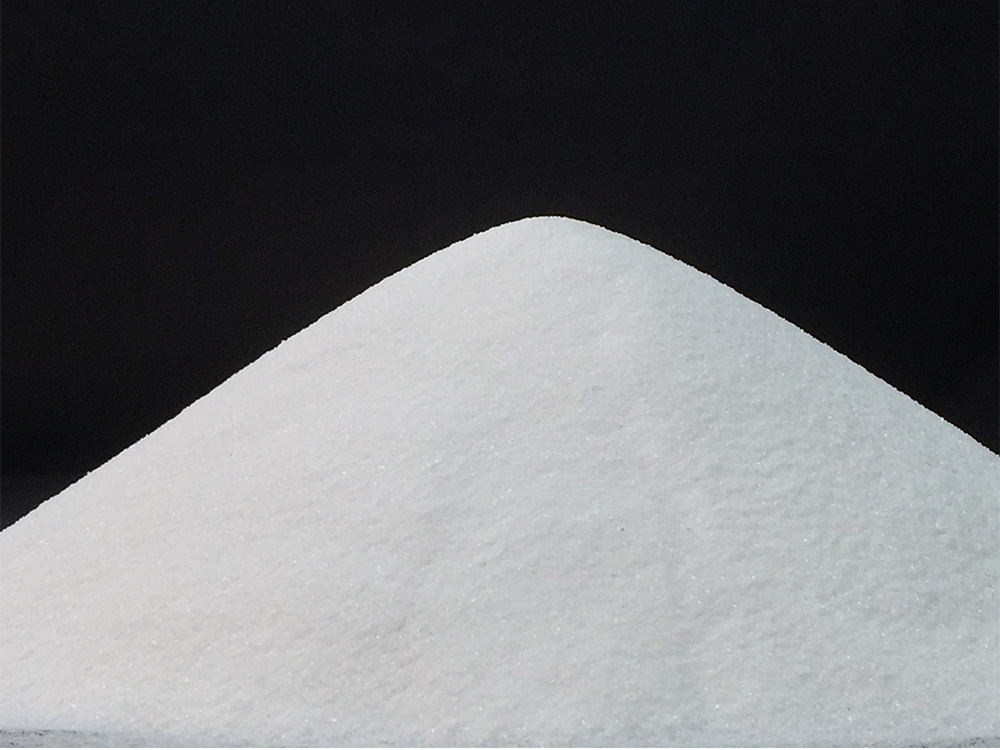Influence of particle size of stearic acid modified calcium carbonate on the properties of PBAT composite films

Polybutylene adipate/terephthalate (PBAT) is a copolymer of butylene adipate and butylene terephthalate, which not only has good toughness and stability, but also has excellent Biodegradability is an ideal green environmental protection film packaging material, and it is also one of the most studied biodegradable plastics.
However, the tensile strength of PBAT itself is low, the degradation rate is slow, and the price is 5 to 6 times that of ordinary polypropylene, so it is limited in application and promotion. The current research focuses on how to obtain biodegradable materials with superior performance and low cost. Most of the research is to prepare green composite materials by blending relatively cheap fillers with PBAT, ensuring its degradable properties at the same time. Control costs and expand its application value in the market.
Due to its low price and certain toughening effect on polymers, calcium carbonate is one of the most widely used polymer fillers. Using calcium carbonate as filling powder to prepare PBAT/calcium carbonate composite material has become a feasible way to reduce the cost of PBAT. By studying the properties of PLA/PBAT/nano-calcium carbonate ternary composites, the thermal and physical properties of the composites are greatly improved after adding nano-calcium carbonate. PBAT was filled with calcium carbonate, and it was found that calcium carbonate significantly reduced the cost while improving the mechanical properties of the composite. Modified PBAT with ultrafine calcium carbonate, when adding 20% calcium carbonate, the composite material still has good physical properties.
The surface modification of three kinds of calcium carbonate with different particle sizes was carried out with stearic acid, and the PBAT/modified calcium carbonate composite film was further prepared by melt blending method. The effects of mechanical properties and water vapor transmission properties show that:
(1) Through particle size analysis, the particle size distribution range of activated calcium carbonate is relatively wide, mainly distributed in 1 ~ 20μm, the volume average particle size is 7.6μm; the particle size of ultrafine calcium carbonate is mainly distributed in 0.2 ~ 5μm, volume average particle size. The diameter is 1.5 μm; the particle size distribution of nano-calcium carbonate is relatively concentrated, mainly distributed in 0.2-0.5 μm, and the volume average particle size is 0.34 μm. Through FTIR analysis, it was confirmed that stearic acid has been successfully coated on the surface of calcium carbonate, and the modified calcium carbonate has been dispersed in the PBAT matrix.
(2) After adding modified calcium carbonate, the crystallization temperature, crystallinity and melting temperature of PBAT are increased. When activated calcium carbonate with a volume average particle size of 7.6 μm was added, the crystallization temperature reached a maximum value of 84.12 °C, which was 13.07 °C higher than that of pure PBAT; the crystallinity also reached a maximum, from 10.4% of pure PBAT to 11.48%. When the modified nano-calcium carbonate was added, the melting temperature reached a maximum value of 124.99 °C.
(3) The mechanical properties of PBAT/modified calcium carbonate composite films were significantly improved, and with the decrease of the particle size of modified calcium carbonate, the mechanical properties gradually increased. When the modified nano-calcium carbonate with a volume average particle size of 0.34 μm is added, the tensile strength of the composite film reaches the maximum value of 19.9 MPa, which is 10.07 MPa higher than that of pure PBAT, and the nominal fracture strain reaches 551.8%, which is higher than that of pure PBAT. It is increased by 54%, and the right-angle tear strength is increased from 72.5kN/m of pure PBAT to 139.3kN/m.
(4) The barrier property of the film to water vapor is enhanced after adding modified calcium carbonate. The water vapor transmission rate of the composite film adding activated calcium carbonate is the lowest, which is 232.3g/(m2·24h), which is 28.06 lower than that of pure PBAT film. %, the corresponding water vapor permeability coefficient decreased by 66.09%.
